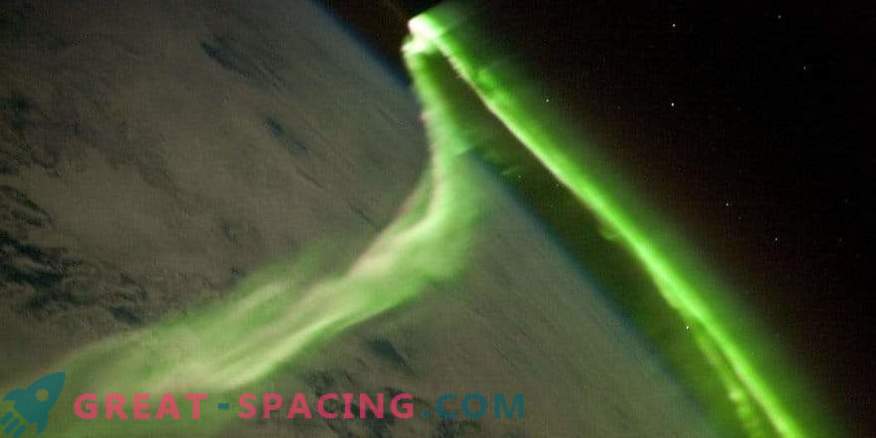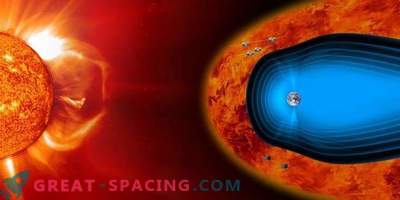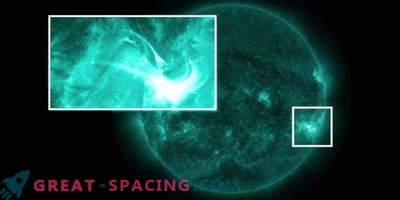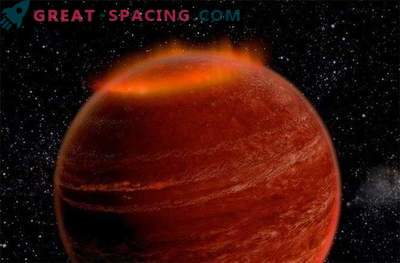
Southern aurora version captured in 2010 from the International Space Station
Aurora brightens the sky around the poles with increased solar activity, when the star throws charged particles into the Earth’s atmosphere. Previously, scientists believed that these amazing phenomena mirror each other at the poles, but in reality they do not coincide.
Researchers have long tried to find the cause. Now they believe that the whole thing is asymmetry in the magnetic tail of our planet. It was believed that the asymmetry in the system penetrates the magnetosphere through tail reconnection. But the opposite is true.
Magnetic earth tail is created by the contact of the planet and the sun's rays. The interaction begins with the Earth’s magnetic field, created by a rotating core and generating an electric charge. Magnetic fields form magnetic field lines (arcs between the north and south poles) that can control the behavior of the material around it.
But the magnetic field of the Earth is not the only participant in the process. The Sun also has a similar effect on the constant flow of highly charged plasma particles flowing in all directions. The solar wind interferes with what the Earth creates, squeezing on the day side of the planet and stretching on the night side in the shape of a tail. The magnetic field lines pass through a curved field, after which they break and create reconnections. It was believed that this phenomenon creates differences in the northern and southern auroras. But now it is clear that the magnetic field of the solar wind does not always coincide with the earth's magnetic field. With distortion, an asymmetry arises between the north and south poles, transmitting to the auroras.
Scientists studied the northern and southern auroras in the far infrared range and traced how they coincide. Then they added information about reconnections in the magnetic tail of the Earth. The analysis showed completely opposite information. Dramatic reconnections did not increase the asymmetry, but rather pushed the aurora toward conformity.
The study of auroras is a secondary process, as it is a side effect of the influence of the sun on the earth. But space weather can interfere with navigation satellites and disable electrical networks.











































